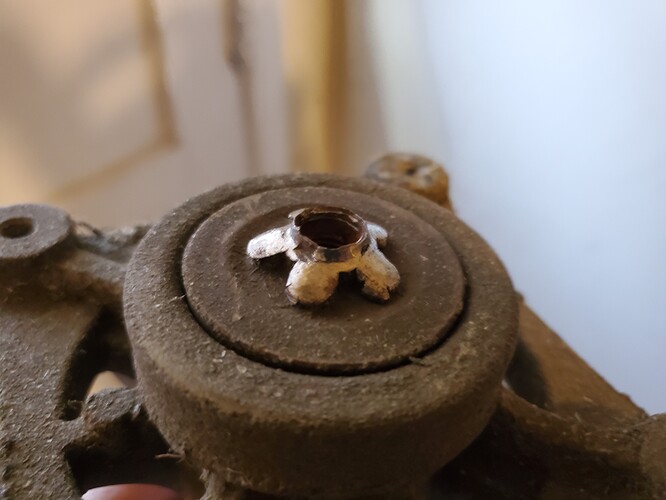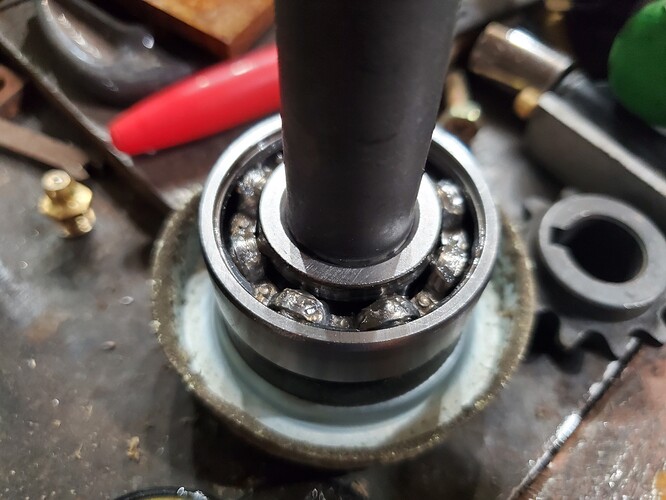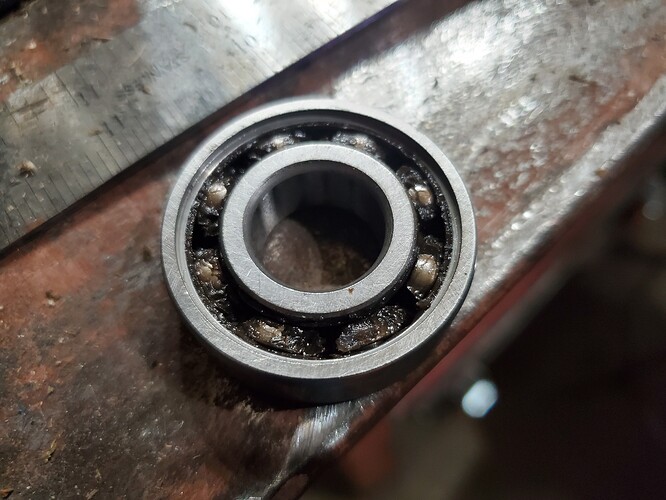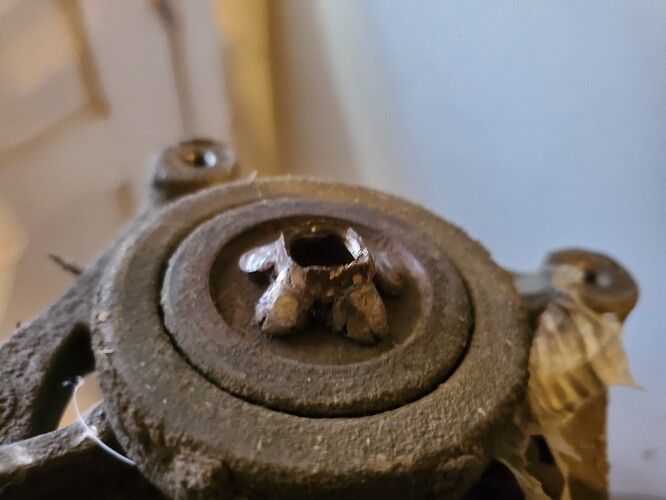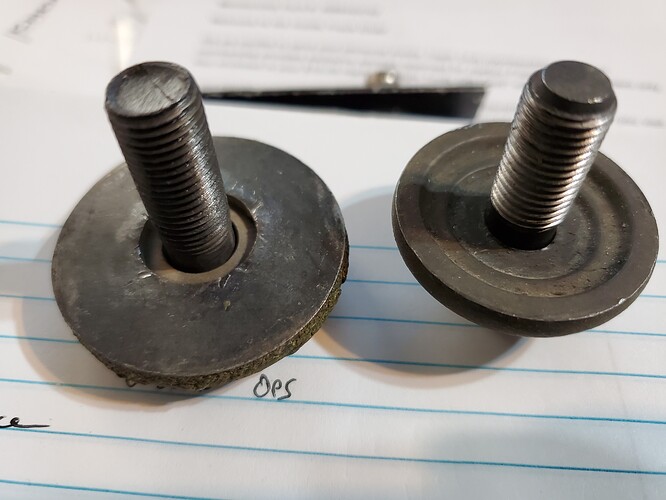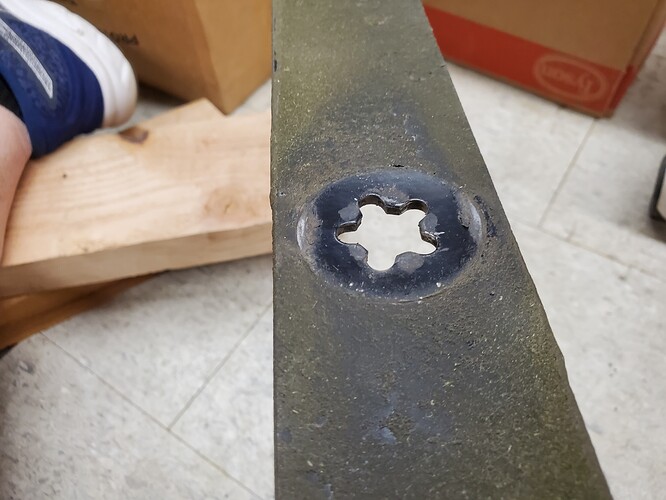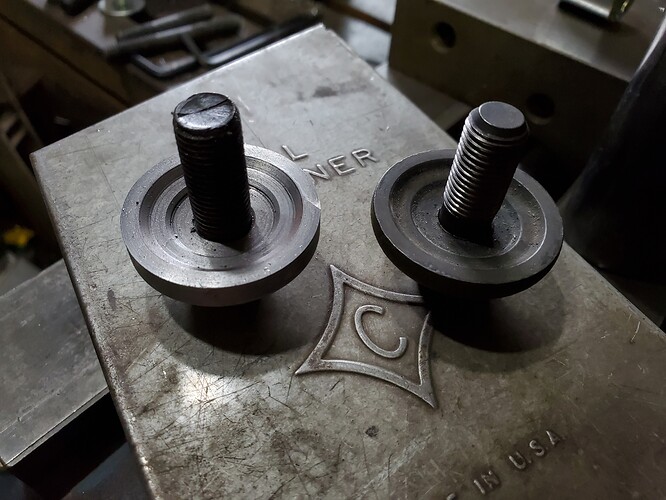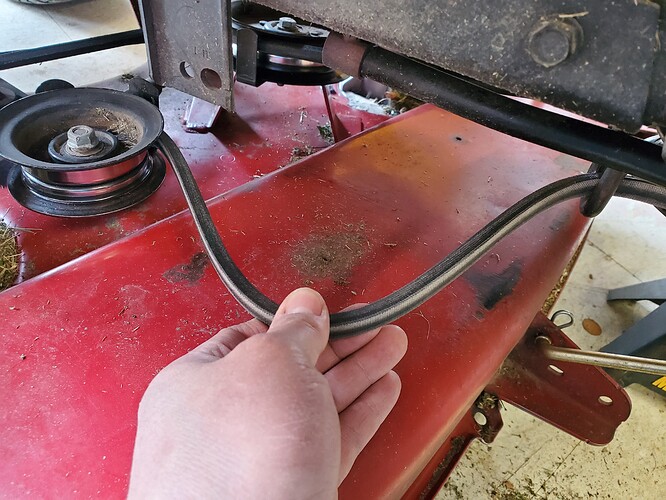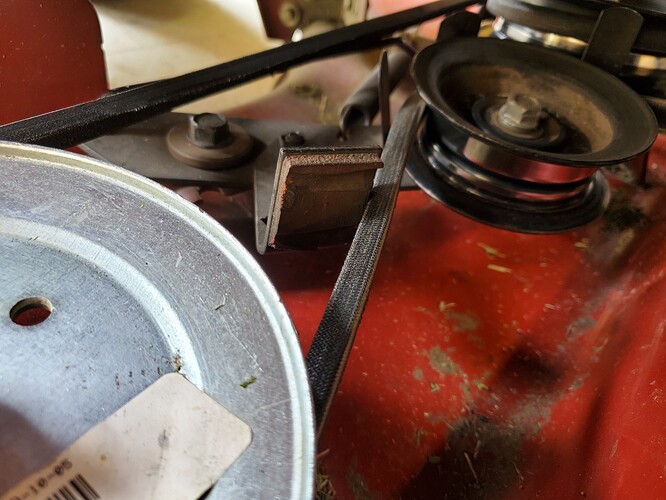Check this site for mower parts
I picked them up
So you’re saying you got the shaft?
I’ve done a bit of reading over the past couple days about these spindles and their failure rate. They are clearly a cheap design, and a common failure mode is the bearings dry out and go bad. Many videos and webpages are dedicated to overcoming this design flaw and so I was expecting to find bad bearings in the removed spindles. More on this at the end.
However, the bearings seem to be ok. They clearly have hours on them, and could use additional lubrication. That isn’t the failure in these, though. On one spindle, the pulley has managed to round off the splines on the spindle. The other two show that the lobes that engage the blade are worn away. Both of these situations appear to be user induced. I can only assume that the blades are fine in all cases, so for the blade to ride up over the lobe on the spindle, it must have some room to move. I suspect that the telltale sign of failure is a rattling noise, indicating that something is loose, in these cases, the blade or the pulley.
When these spindles are replaced or the blades are removed for sharpening and reinstalled, how does the installer know that they are sufficiently tight? When these spindles were removed for failure, were the bolts and nuts still tight to the pulley and blade or was there slop? (If the blade or pulley was rattling, there was obviously slop.) Having seen some of the other pulleys that have been removed, I can see that they were obviously loose and allowed to rattle for some time. The pulley with the 1" hole worn in the middle clearly didn’t get that way overnight.
I see two solutions to this, to reduce the frequency of failure with the spindles. This design is not the best, but the failures we are seeing are not the typical failures seen. So, our process of installation may not be up to par. With any assembly like this, as long as everything is sufficiently tight to prevent ANY unwanted movement, wear cannot occur. It is when the slightest amount of movement occurs that wear occurs, then more movement occurs, and it snowballs. The design, being what it is, may not be good enough to prevent that unwanted movement, but the fact that I don’t read of these failures being common says otherwise. If we are just getting them “tight enough” they may need to be tighter.
The second solution, and one I would suggest for now to be just that - secondary - would be to retrofit a better designed spindle to the mower deck. Exmark, Toro, and other commercial designs see far fewer failures and run for many times the hours this mower does in a given season. In fact, some probably see as many hours in a month as this mower has seen in its lifetime. Those spindles are built more heavily and are made to be more serviceable. They also fail far less frequently. Adapting a better spindle design is obviously far more involved, but if all else is fine with the mower, and if this problem cannot be solved otherwise, that might be a viable solution.
As far as the mower being “fine otherwise”, I noticed that the front end has considerable toe-out, which has clearly led to excessive wear on both front tires. I am going to try to find time to get over and look at the steering and see where adjustment can be made or if parts need to be repaired or replaced.
Lastly, the normal failure in these spindles seems to be dry bearings. Many come with grease zerks installed either on the spindle itself or on the side of the housing. However, the bearings that are installed are typically of the -2RS style, meaning they have rubber seals on both sides, thus preventing any grease that is applied from reaching inside the bearings. Much like greaseable ball joints on the cars, many manufacturers forego the expense of these added zerks because many people never think to grease them, so they dry out. The sealed bearing or sealed assembly has now become the prevalent style. These bearings are not dried out, but I don’t know how many hours each has on it. So, for now I would say we should continue to not use the pointless grease zerks. If, in the future, this current issue of spindle wear is tackled and dry bearings becomes a common theme, maybe we can revisit this and consider removing the inner seals and greasing the bearings regularly. For now, it is a pointless exercise.
Does the mower have a preventative maintenance schedule or are we just servicing it seasonally/as warranted?
I hope we set up a schedule for mx. The last spindle that was changed had the damage at the 5 point. I suspect because the bolt retaining the blade was either the wrong thread, or cross threaded and was never properly tight. It was difficult to back off that bolt when pulling the blade. With just a little looseness on the blade it wore the blade as well as the spindle. Additionally, the top nut was welded to the pulley. I agree that it is a bad design and partly due to the pulley itself - it’s very thin and seems to have a lot of wear looking at others that had been removed. The left blade is a longer blade than the one on the right - I’m not sure that is correct, but put things back the way I found them -
The front tires are extremely worn - they were worn badly last season, and am certain some sort of alignment would be helpful for when new tires are put back on. Also, there are several make-shift brackets that seem to have been installed to provide support for the deck. Last season, I had to reinstall the nuts on several of the bolts - they were riding around on top of the deck. The front draft arm adjustment nut backed off causing the arm to drop and be bent last season as well - so the arm and associated hardware were changed.
It is a good mower - I’m sure it will be better as the season progresses - just need to show it some love! Thanks for all you’ve done David!
I like the design of the spindles on my old Montgomery Wards (MTD) mower. It uses a pair of 3/8" IIRC bolts to hold the blade on and a keyed pulley. I have not had any issues with it in the years I’ve owned it. My old Murray had to have a new spindle when I bought it used, but it served me well after that, never needing more attention there.
First off, the mower is on blocks. (Actually, it’s on jack stands, but it’s more fun to say it’s up on blocks!) I pulled the blades so you won’t be able to mow the wet grass even if you get it down off the jack stands.
Second, the reason the spindles are failing so quickly is two-fold. The bolts are not getting tightened sufficiently. Maybe it would be a good idea to invest in a torque wrench and then train anybody who wants to maintain the mower on its use. That said, even if the bolts were sufficiently tightened, one would still have loosened itself. The starboard side blade was looser than [insert sailor joke here]. The reason is that the original washer is long gone and the one that somebody replaced it with is too wide. This causes it to ride up on the curved edge of the blade and not seat on the flat part. So, even if it’s tight initially, the vibration of mowing causes it to loosen. I’ll make a new one hopefully tomorrow, but it might be a good idea to purchase a replacement that is hardened if one can be found. My next post will have pictures of the good and bad washers.
Third, the alignment is better now. I noticed that the caster seemed wrong, so I pulled the front axle and flipped it around. The toe out was originally over 2" and is now down to a little over 1/2". Still not perfect, but that much is just due to wear in the hardware and won’t wear out the tires like has happened. It’s possible that it’s better just because I took it apart and put it back together, but I think there is a slight amount of tilt to the front axle and was in backwards.
Last, per the web, the correct length blades for this mower are 22 7/8", or 23". I did verify that the port blade fits the starboard side and while it does drag slightly at the rear of the deck, I think that was just built up grass.
Here you can see where the bigger washer was riding up on the edges of the blade.
Adding on…
New washers are installed. I reinstalled one of the old blades so that it will cut a full swath although that blade is very dull. Another new blade should be purchased. I also reinstalled the port side blade pulley with the washer under the blade where it belongs. That washer/spacer is there to keep the pulley up on the splines, not down against the spindle housing. While I was at it, I torqued both blades to 80 ftlbs as well as the pulley retaining nut to 80 ftlbs. If you try to remove either and they seem very tight, that’s because they should be. You should not be able to remove either with just a 3/8" ratchet unless you have a cheater on it.
I also noticed that the belt seems incorrect. When engaged it rubs against the starboard side blade brake. The idler should not have to move this far to tension the belt. This should be replaced with the correct belt.
Did you find the two new bolts with washers in the box when you got the spindles?
Thanks for all that you’re doing with the mower! It needed a friend!
I’m guessing that’s where the washer that was too big came from since it matches the ones in the box. Those spread too far to the sides and don’t allow the bolt to be properly torqued.
